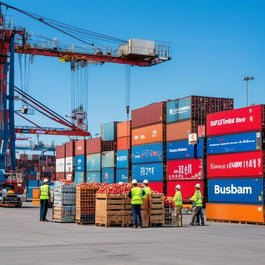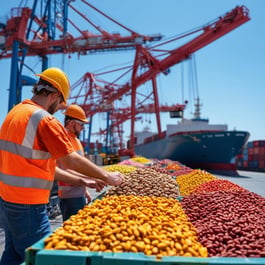Exporting Dairy Products: FCA Manila, Shipping from Port of Philadelphia
Summary
- Port of Loading: Port of Philadelphia, PA
- Port of Discharge: Port of Manila, Philippines
- Commodity: Dairy Products
- Incoterms: FCA (Free Carrier)
- Payment Term: Letter of Credit
Key Insights:
- FCA Responsibilities: Sellers deliver dairy products cleared for export to the designated carrier at the Port of Philadelphia, while buyers handle freight, insurance, and customs clearance in Manila.
- Logistics Planning: Proper temperature-controlled storage, secure packaging, and timely booking of refrigerated containers are essential for preserving product quality.
- Essential Documentation: Accurate invoices, bills of lading, certificates of origin, and health certificates ensure compliance and smooth customs clearance.
- Customs Compliance: Exporters must adhere to U.S. export standards and the Philippines’ import regulations for dairy products.
- Risk Mitigation: Buyers should secure marine insurance and use tracking tools to monitor shipment progress and ensure timely delivery.
How to Streamline Your Export Operations Using FCA Incoterms
Exporting dairy products from the Port of Philadelphia to the Port of Manila under FCA terms requires precise coordination to maintain product safety and regulatory compliance. This guide provides actionable steps for successful shipping.
Step 1: Understand FCA Responsibilities
Under FCA:
- Seller Responsibilities:
- Deliver dairy products to the designated carrier or terminal at the Port of Philadelphia, cleared for export.
- Ensure proper packaging and labeling to meet international standards.
- Provide all required export documentation.
- Buyer Responsibilities:
- Arrange and pay for freight from Philadelphia to Manila.
- Manage marine insurance for the shipment during transit.
- Handle customs clearance and delivery from the Port of Manila to the final destination.
Pro Tip: FCA allows sellers to focus on export readiness while giving buyers full control over international shipping and insurance.
Step 2: Plan Your Export Logistics
Efficient logistics ensure dairy products arrive fresh and intact:
- Choose the Right Carrier:
- Select a carrier experienced in handling perishable goods with reliable refrigerated container options.
- Secure Temperature-Controlled Containers:
- Arrange for reefers (refrigerated containers) to maintain optimal temperatures for dairy products.
- Prepare for Shipment:
- Follow international standards for packaging and labeling dairy products to prevent spoilage and contamination.
- Book Freight Early:
- Confirm container availability and reserve space in advance, especially during peak export seasons.
Pro Tip: Work with a freight forwarder to streamline container booking and carrier coordination.
Step 3: Prepare Essential Shipping Documents
Accurate documentation is critical for regulatory compliance and smooth customs clearance:
- Commercial Invoice: Details the value, quantity, and transaction terms of the dairy products.
- Bill of Lading: Acts as proof of shipment and specifies delivery terms.
- Packing List: Provides specifics about the shipment’s contents and packaging.
- Certificate of Origin: Verifies the dairy products’ U.S. origin.
- Health Certificate: Certifies compliance with the Philippines’ food safety and quality standards.
Pro Tip: Double-check all documents to avoid discrepancies that could delay customs clearance.
Step 4: Navigate Customs Clearance
Customs clearance ensures compliance with U.S. and Philippine regulations:
- Submit all required documents to relevant customs authorities.
- Ensure dairy products meet the Philippines’ food safety, labeling, and import requirements.
- Respond promptly to any additional inspection or documentation requests.
- Pay applicable duties and taxes upon arrival in Manila.
Pro Tip: Partner with a customs broker experienced in agricultural and dairy product exports to the Philippines.
Step 5: Mitigate Risks and Optimize Costs
- Marine Insurance: Buyers should arrange comprehensive insurance to protect the shipment from damage or spoilage during transit.
- Freight Optimization: Buyers can negotiate competitive rates for refrigerated container transport to reduce overall costs.
- Shipment Monitoring: Use digital tracking tools to monitor shipment progress and address potential issues proactively.
Key Takeaways for Exporters
- Focus on Export Logistics: Sellers ensure the dairy products are export-ready and delivered to the carrier at the Port of Philadelphia.
- Accurate Documentation is Essential: Proper documentation ensures compliance with U.S. and Philippine regulations, preventing delays.
- Collaboration is Key: Work closely with reliable carriers, brokers, and buyers to streamline the process and maintain product quality.
By following these steps, exporters can successfully deliver dairy products from Philadelphia to Manila under FCA terms, ensuring compliance, efficiency, and product safety.




Leave a Comment